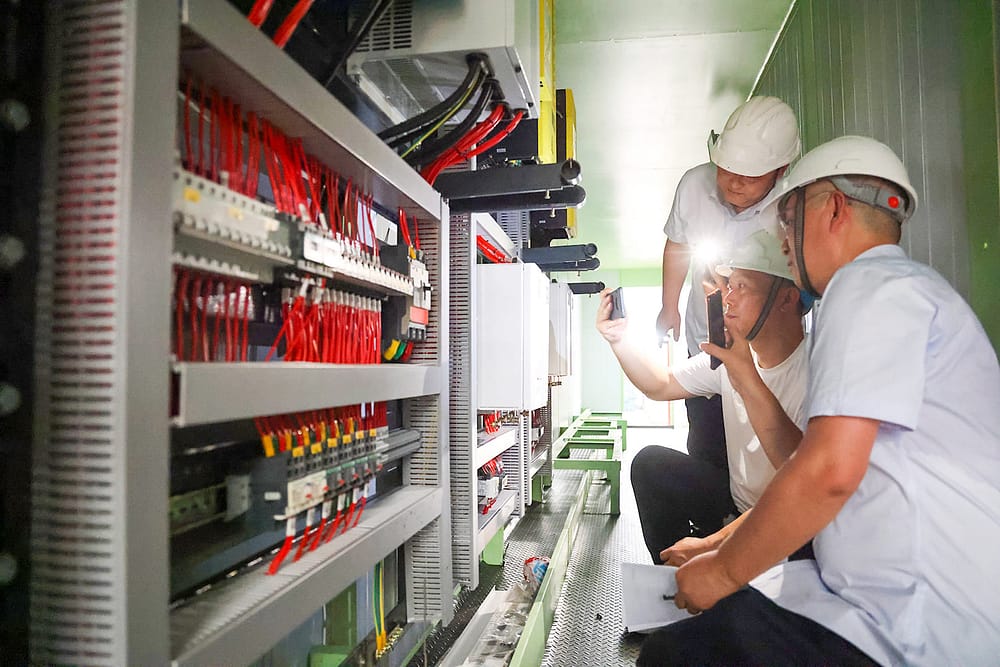Dependable technical support for electrical industry solutions.
Dependable technical support for electrical industry solutions.
Blog Article
Top Tips for Effective Electric System Troubleshooting
Troubleshooting electric systems needs a systematic technique, based in a detailed understanding of electrical concepts and safety methods. By familiarizing oneself with circuit parts, utilizing crucial devices, and adhering to a structured evaluation approach, professionals can efficiently recognize and deal with issues. Nonetheless, the nuances of reliable troubleshooting prolong past mere technological understanding; comprehending just how to document findings and focus on safety and security can substantially affect results. As we discover these critical components even more, it becomes clear that understanding this procedure is not just advantageous yet important for success in the area.
Understand the Basics
Understanding the fundamentals of electrical systems is necessary for efficient troubleshooting, as a solid foundation allows professionals to identify and resolve issues extra efficiently. A detailed grasp of electric principles, such as voltage, present, resistance, and power, is vital in determining the source of problems. Voltage is the electric possible difference that drives existing via a circuit, while resistance opposes the circulation of present, affecting the overall functionality of the system.
Knowledge with circuit parts, including resistors, capacitors, diodes, and switches, is likewise paramount. Each part plays a distinct duty in circuit behavior and can influence performance when malfunctioning. In addition, understanding series and identical circuit configurations is essential, as these arrangements affect the distribution of voltage and present within the system.
Specialists have to be conscious of prospective risks, such as shock and brief circuits, to execute safe troubleshooting practices. By understanding these foundational principles, professionals boost their ability to conduct effective diagnostics and repair work, eventually leading to enhanced performance and dependability of electric systems (electrical system troubleshooting).
Gather Necessary Equipment
Efficient troubleshooting of electric systems needs the ideal set of tools to diagnose and solve problems properly. A well-appointed technician can considerably enhance performance and effectiveness in identifying troubles. Crucial devices consist of a multimeter, which determines voltage, existing, and resistance, enabling precise evaluations of electric elements. Clamp meters are also valuable for measuring current without separating the circuit, making sure security and benefit.
Furthermore, protected hand devices such as screwdrivers, pliers, and cord strippers are critical for securely manipulating electric connections. It is also advisable to have a circuit tester available to confirm the visibility of voltage in electrical outlets and wires. For more complicated systems, a thermal imaging camera can help spot overheating parts, suggesting possible failures.

Comply With a Systematic Method
Having actually collected the suitable tools, the next action in troubleshooting electric systems is to comply with an organized approach. A systematic approach makes certain that professionals can recognize faults efficiently and properly, reducing downtime and preventing unneeded repairs.
Begin by examining the system's schematic layouts and specs. Comprehending the design and operational parameters will offer context for diagnosing problems. Next off, separate the trouble area by making use of a process of elimination. This entails monitoring each element methodically, beginning with the power resource and functioning in the direction of the lots.
Use screening equipment, such as multimeters and oscilloscopes, to gather unbiased data regarding voltage, present, and resistance at various points within the system. This empirical evidence will certainly lead your troubleshooting efforts and aid to confirm or eliminate prospective reasons of failing.
In addition, consider ecological elements that might influence the system's performance, such as temperature variations or wetness access. A comprehensive examination of circuitry, connections, and parts will make sure that all opportunities are represented.
Record Your Searchings For
Comprehensive paperwork is crucial in the troubleshooting process of electric systems. This practice not just aids in recognizing the origin cause of the trouble however likewise serves as a recommendation for future repairing initiatives.

Additionally, preserving a log of components changed or repairs carried out is vital. This information sustains supply management and can help assess the durability and integrity of details parts.
Ultimately, the paperwork Get More Info process must be thorough yet concise, enabling very easy access and testimonial - electrical system troubleshooting. By focusing on comprehensive paperwork, professionals can develop a useful understanding base that not just aids in current troubleshooting yet additionally empowers future maintenance initiatives, thus boosting general system integrity

Prioritize Precaution
Acknowledging the inherent dangers related to electrical systems is critical for guaranteeing safety and security during troubleshooting. Electric shock, burns, and tools damage are simply a their explanation few of the possible risks that professionals face. Prioritizing safety procedures is not just a lawful obligation however additionally a moral necessary that safeguards both the specialist and the surrounding setting.
Prior to commencing any type of troubleshooting task, professionals should put on proper individual safety tools (PPE), including insulated gloves, safety glasses, and flame-resistant clothing. Making sure that the workplace is completely dry and devoid of mess can considerably decrease the danger of mishaps. It is important to de-energize circuits before beginning any type of job, confirming that they are not live via the usage of a multimeter or voltage tester.
Developing clear interaction protocols with group participants is additionally vital; this guarantees that everyone knows prospective risks and the status of the electrical system being serviced. Having an emergency situation feedback strategy in place can prove invaluable in the occasion of an occurrence. By prioritizing safety measures, specialists can properly mitigate dangers and cultivate a safer office.
Final Thought
Effective electric system repairing relies on a detailed understanding of fundamental principles and a systematic approach. Prioritizing safety and security measures makes sure the well-being of individuals included and the stability of the electrical system.
Report this page